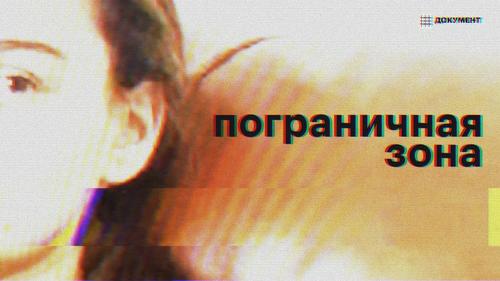November 2022
Pograničnaja Zona / Die Grenze 2022
Pograničnaja Zona / Die Grenze von Egor Isaev
Drehbuch: Egor Isaev
Genre: Dokumentarfilm
Jahr: 2022
Sprachfassung: Russisch
Dauer: 25 Minuten
Hier geht es zum Film
Synopsis: Der Dokumentarfilm "The Frontier“ (2022), produziert von Egor Isaev, handelt von AktivistInnen, die versuchen, Anastasiia, eine junge Frau aus Charkiv, aus einem russischen Gefangenenlager zu befreien. Anastasiia verließ die Ukraine zu Beginn des Krieges, während ihre Schwiegermutter in der besetzten Region Charkiv blieb. Nach mehreren erfolglosen Versuchen, ihre Schwiegermutter zu evakuieren, beschloss Anastasia, sie selbst aus der Region zu holen – und reiste im August in die Region Belgorod (Russland), um von dort aus in die besetzten Gebiete zu gelangen. In der Nähe von Belgorod wurde sie von russischen Geheimdienstmitarbeitern festgenommen und gefoltert. Mit der Hilfe von Freiwilligen und Menschenrechtsaktivisten, darunter MitarbeiterInnen der Organisation „Rus' sidjaščaja“ konnte Anastasiia schließlich die besetzte Region zusammen mit ihrer Schwiegermutter verlassen.
Egor Isaev, the creative producer of “Frontier” about the film:
We began talking about launching the production of documentaries about what is happening in Russia and beyond in '22 (after Russia launched a full-scale military offensive against Ukraine) back in the spring. In the face of increasing censorship and repression of journalists, activists, and documentarians, we understood that the number of audiovisual documentaries would be greatly reduced. At a time when the need for documentation of events was only increasing.
First of all, we developed a safety protocol for the cooperating members of the film crew, because the risks were obviously very high. We began an active story search in the summer '22, but filming several times was somewhat disrupted at the last minute. At the beginning of September, we were approached by volunteers from organizations that help Ukrainians leave Russia. These people were in Russia for various reasons, including being forcibly deported from Ukraine. The volunteers had the nontrivial task of helping a girl from Kharkov, who was trying to get her mother-in-law out of the occupied village and was caught by Russian security forces. She was brought to an unknown location and tortured for several days. The situation was complicated not only by the fact that the young woman had to be brought to the border quickly, but also by the fact that she had to be picked up from the TDF before she would be intercepted again by the Russian special services.
The context of the situation determined both the plot and the aesthetic techniques. I had to find a documentarian in one day who would be ready to go with the volunteers the very next day. I had never directed a film from a distance before and it was impossible to keep constant contact, so I concentrated on the structure of the story first to give the crew very precise instructions. The film was supposed to have 5 parts, where the first was the night drive from Moscow to Belgorod, the second was the volunteers preparing to evacuate the Ukrainian woman, the third was the scene of the young woman leaving the TDF, the fourth was the overnight stay at the safe house with a potential heroine monologue, and finally the fifth was the departure from Russia and crossing the border. In addition, I had an important and terrifying document that needed to be published. It was a recording of a phone conversation between one of the Russian security forces and the woman's husband, a member of the AFU. They were calling him to get information while she was being tortured in the background. I understood from the beginning that this conversation should be the thread tying the whole narrative. And the conclusion of the story should be a conversation between the Ukrainian woman (already free) and her husband. That, unfortunately, didn't happen - there was no connection at that moment. But the whole situation was resolved safely.
During editing, the biggest difficulties arose around the definition of the protagonist of the narrative. On the one hand it seemed that Roman (the head of the volunteer group) was the character who moved the story forward. On the other hand, it was all happening because of the young woman's volitional effort to save her mother-in-law. Besides, I understood that the girl could be heavily traumatized by the torture and could suffer from PTSD. So my main instruction was to stay away from her with the camera, to try not to film her from the very beginning (besides, another volunteer organization had cheated her before, so it was assumed there would be problems with her credibility). As a result, the film went through five cuts: each time we shortened the beginning and gave more screen time to the Ukrainian woman. I also think it was a great success that the film crew was able to capture those visceral, terrifying nights on the road from Moscow and in Belgorod itself, which I think, along with the audio recording in the background, gives insight into the fear felt by those involved in those events. Unfortunately, for security reasons we were unable to film two things: the young woman's leaving the TDF (there were Russian security officers in masks and a camera could have made things very difficult) and the border crossing itself was very risky for the volunteers because of the very specific position of the authorities from the countries of the Baltic region.
Egor Isaev

